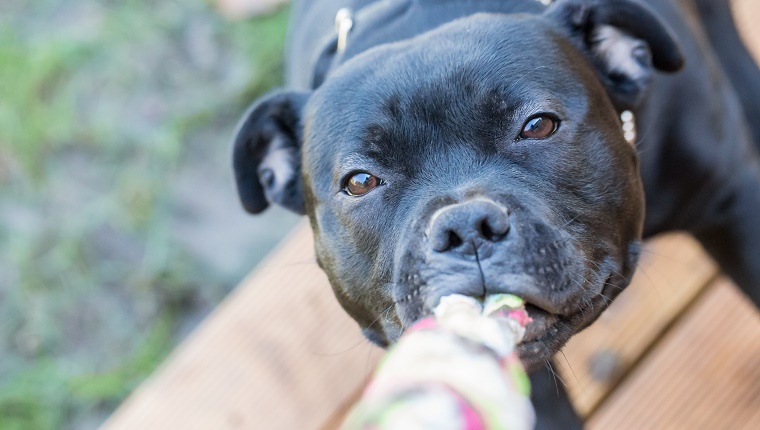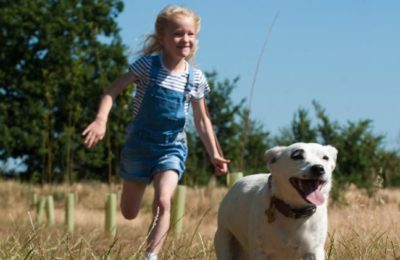With animal rescue centres facing rising costs and high levels of demand, Wood Green, The Animals Charity, has set up a specialist advisory service helping pet parents keep their pets at home rather than resorting to adoption.
Across the UK there are some 1,500 animal rescue centres caring for around 250,000 pets. Although Dogs Trust reports that the number of stray dogs has fallen dramatically over the last ten years to 66,000, this number is still way too high. Caring for, and rehoming, abandoned animals not only puts a huge financial strain on rescue charities, but it also creates a welfare issue which the rescue centres are keen to address.
In the run-up to Christmas, charities such as the RSPCA are highlighting the need for responsible pet ownership through poignant advertising campaigns such as this one about abandoning a dog. These campaigns are designed to encourage people not to be swayed by celebrity endorsements to adopt animals which they are unable to care for once the initial euphoria has worn off.
Advisory services support pet owners in understanding their pets
Wood Green, The Animals Charity, is one of the UK’s oldest rescue organisations. The first shelter was opened in 1924 in Wood Green, North London, by Dr. Margaret Young, who was concerned at the number of stray and abandoned animals around London after the war. Additional centres later opened in Heydon, Hertfordshire in 1954 and then Godmanchester, Cambridgeshire in 1987.
Godmanchester is Wood Green’s largest site covering an impressive 52 acres, making it one of the biggest animal rehoming centres in Europe, with a purpose-built veterinary surgery, dedicated animal play and housing areas, and an educational centre. Have a look around the site with our video tour.
In the last 12 months, Wood Green has rehomed 4,298 cats, dogs, small and field animals, up from 4,041 in 2015/16. In addition, in the first six months of their Pet Support Project, they helped a further 1,635 pets with financial & behaviour/training related support.
However, whilst retaining its commitment to rehoming, Wood Green is increasingly offering a broader range of advisory services to potential and existing pet owners. Under the Animal Services Division, it offers interactive workshops, educational and community events, which are designed to help pet owners understand the behaviour and needs of their animals. “There are lots of people having really successful relationships with their pets which we can help to enhance with enrichment ideas, benefitting both the pet and the pet parent,“ comments Linda Cantle, Director of Animal Services.
Pet Support Project designed to keep pets at home
Earlier this year, the Animal Services Division launched a new initiative called the Pet Support Project. This project is aimed at helping distressed pet parents resolve problems before feeling that they have to resort to adoption. Not only is adoption and rehoming an expensive option, but it can also be very upsetting for the family and the pet. Further, there are potential welfare concerns for those animals who are long-stay residents in a rescue centre, so it is in everyone’s interest to help resolve issues early on.
When a pet parent contacts Wood Green’s Pet Support service, their experienced animal team triage calls to understand the issues that people are having. Depending on the nature of the problem, the team can offer behavioural advice, financial support, guidance and a home visit to help the pet owner. Currently, the service operates on a very personal, individual basis but the team are keen to scale it up to reach more people. So far, the Project has successfully helped 106 dog owners keep their pets at home. Early intervention is important to ensure that the problem can be solved.
Being able to provide a personal, tailored service is key to helping pet owners deal with a crisis. Carla Leete, Pet Support Team Leader, comments that: “People are so grateful for any advice that we can give to help them with their options. If we don’t help them, they tend to turn to the internet and may get the wrong information for their situation.”
People are so grateful for any advice that we can give to help them with their options. If we don’t help them, they tend to turn to the internet and may get the wrong information for their situation.
Carla Leete, Pet Support Team Leader
Lifestyle changes drive adoption
For most people, the decision to give up their pets is extremely difficult and not one that is taken lightly. Research by Wood Green has found that a change in the pet owner’s lifestyle is the main reason (68%) why people give up their pet for adoption. Lifestyle issues can range from a relationship breakdown to restrictions on rental properties and health issues. Pet owners being unable to find a rental property which allows them to keep pets is a major issue.
Other key factors which lead to the decision to give up pets include behavioural difficulties (30%) and financial issues (2%).
Helping pet parents understand their animal’s behaviour
Understanding an animal’s behaviour, particularly dogs, is critical both for prospective and existing owners. Knowing upfront the time and energy that they will have to devote to a dog, and understanding what is likely to happen at each stage of a dog’s lifestyle, can help prepare the owner and prompt them to seek appropriate guidance.
Some dogs in particular need an active lifestyle to keep them stimulated and entertained. If not, they can become frustrated which may cause problems with the family. “We want people to understand the responsibility that they take on when they have a pet and to enjoy them when they do,“ comments Linda Cantle.
Depending on the breed of dog, adolescence can be a particularly challenging time for pet owners. If not dealt with appropriately, it can be a very stressful stage for owners. As with teenagers, Behaviour & Training Specialist Wendy Kruger’s advice to owners is “you have to survive adolescence”. Wood Green offers a variety of training classes, workshops and talks to help owners through this difficult period.
The age at which adolescence sets in can vary by breed. Bull breeds, such as Staffordshire bull terriers for example, can be very physical during adolescence and need appropriate training and handling by their owners. Their enjoyment of ragging/tug games, gives them an outlet for their love of grabbing and tugging. Using a toy as a target means that the family are unlikely to find their bull breed resorting to tugging at their trouser legs or stealing the tea towel! “Realistically, pets’ needs are met when they go to appropriate homes and people need to adjust their expectations accordingly,” comments Linda.

Staffordshire Bull Terriers love playing tug
However, it is not only dogs which have behavioural issues. The Animal Services division also has calls from cat owners who need advice on issues such as socialisation and encouraging cats to use the litter tray.
A strong bond is key
Over and above everything else, the one key factor which enables a pet owner to find a solution to behavioural issues is the bond with their animal. Even if a dog’s behaviour is not as it should be, the owner will go to enormous lengths to resolve the problems, if they have a strong enough bond. Wendy believes that “The bond between the pet and owner is key to building a lasting, happy relationship. Where the bond is good, the owner will commit to it. If the bond is not so good, then, despite the fact the problem may not be particularly massive, and the solution being achievable, sometimes it just cannot be resolved.”
Watch
Need some tips and advice on how to improve the behaviour of your cats or dogs? Take a look at our unique series of videos created by animal behaviour experts Celia Haddon and Mark Bridger.







